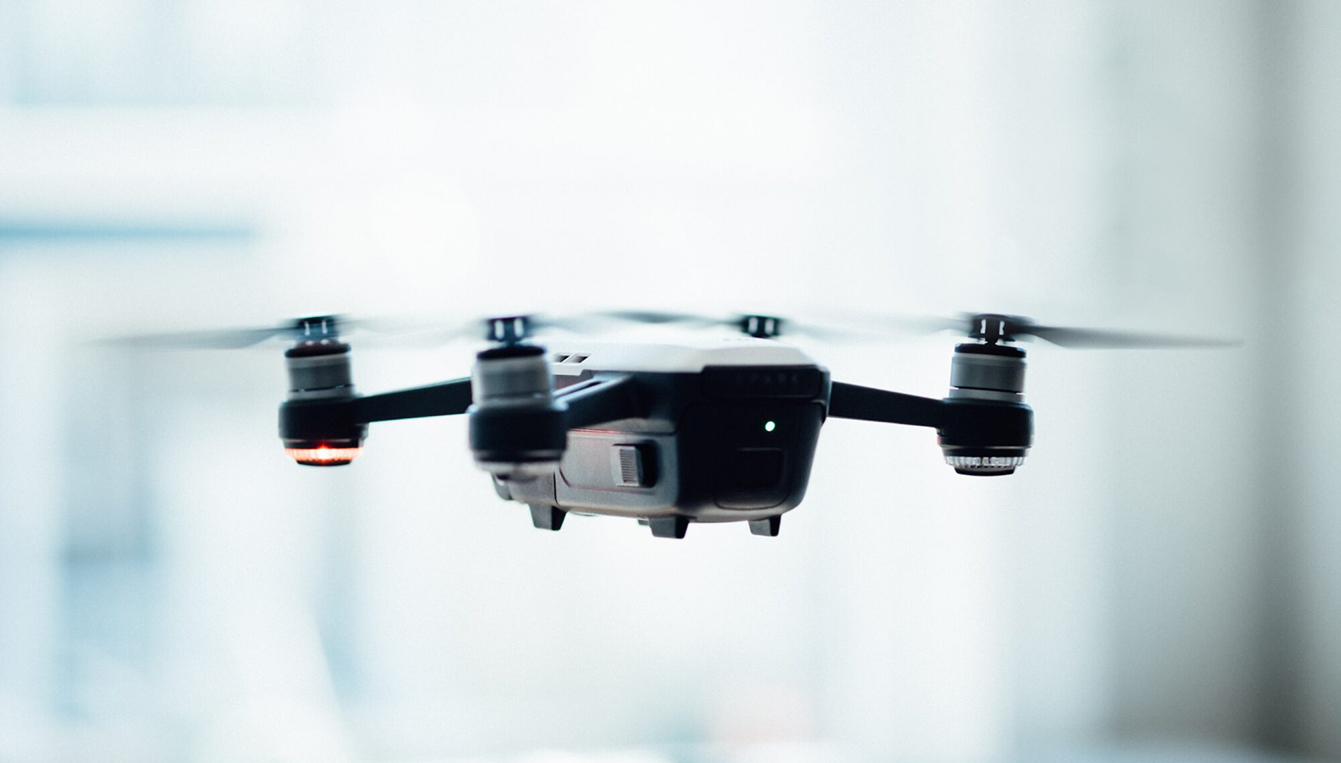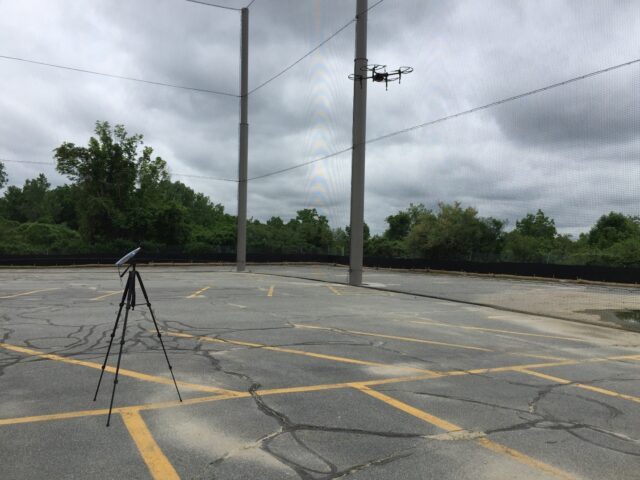Ethan R. Brush
Energy, Environmental, Transportation |
Market Co-Leader
Principal

With the world in social isolation to prevent the spread of the corona virus, many are discovering how to get almost anything delivered to their doorstep with just the click of a button. Today those deliveries are brought to us on a truck or van and physically carried from the street to our address by a delivery person. In the not so distant future many of those deliveries could be made via autonomous delivery vehicles. The speed and convenience of aerial drone delivery is enticing, and it could also be a way to protect delivery personnel and vulnerable individuals from the spread of infection.
Last fall I wrote an article for the National Council of Acoustical Consultants (NCAC) newsletter on the topic of noise from drones. In this editorial to peers in the acoustical consulting industry, I discussed the basics of the sounds that come from small delivery drones and the challenges that these sounds may present in their widespread acceptance in our everyday lives. This blog is a retelling of that article.
———–
The number of drones in our skies has increased dramatically in recent years. Tremendous progress has been made in the last decade to their technology such that these aerial vehicles are now widely available to the public. In their infancy drones were used largely for military purposes, but today many small and large businesses are finding commercial uses for their capabilities. Hobbyists are also picking up drones in growing numbers. Safety, security and privacy have been the main concerns in the development and expanded use of drones. Their noise, however, is a concern that is relatively unaddressed and may become a problem for their continued development and for those who may be sensitive to their sound.
Drones in this context are considered to be small unmanned aerial vehicles (sUAV). Some are fixed wing aircraft, but the large majority of them employ multiple rotor systems that allow for vertical takeoff and landing and hovering. These maneuver by manipulating the speed of each individual rotor, which alters the lift and rotational forces at each rotor thereby controlling the yaw, pitch and roll of the vehicle. Due to their small size the propellers rotate very fast and change speed quickly.
Several studies have been conducted to characterize the sound spectra emitted from drones. Just like fans, the dominant (unweighted) sound levels are produced at the propeller blade pass frequencies, which are in the 100 to 300 Hz range for most small drones. Secondary sound sources can originate from the electric motors and vibration of the airframe. Strong harmonics of the blade pass frequencies have been measured all the way up to several kHz, and can often be the dominant tones on an A-weighted basis. The individual manipulation of each rotor occasionally sets up a beating condition when the blade pass frequencies are only slightly different from one another. The rapidly changing and asynchronous rotor speeds needed when maneuvering or even hovering in windy conditions can exhibit significant sound amplitude fluctuations. All of these mechanisms combine to produce what people perceive as a “buzzing” similar to a swarm of bees. This video provides a good example of the sound of a 4 rotor drone “quadcopter”.
Acentech measurements and other published articles confirm that drones can be considered a point source, so a 6 decibel reduction for every doubling of distance to the receiver is an appropriate approximation for the propagation from source to receiver. The overall sound levels produced by larger commercial drones are about the same as many household appliances, so at even short distances the sounds we hear are relatively low. The risk for hearing damage is not the concern for drones; it is their unique sound characteristics. Their sounds are unlike most others in our environment, thereby grabbing our attention, and leading to distraction and/or annoyance.

Drone Noise Measurements [credit: Acentech]
In 2016 the Federal Aviation Administration (FAA) published comprehensive regulations for routine non-recreational use of small unmanned aircraft systems. The main stipulations are as follows:
These rules allow for growing commercial use in the construction, agriculture and inspection fields, where compliance is relatively straightforward. However, they severely limit the scope envisioned for autonomous delivery of packages by drones to consumers. Companies like Amazon, Google, UPS, and others are all working towards fully autonomous deliveries. Before that happens in the U.S. an entire system of safety rules, drone air traffic control, and drone to drone communication standards must be implemented. NASA and the FAA are currently working on creating a standardized unmanned aircraft systems air traffic management system (UTM) that will provide safety over populated areas. It is expected that new FAA rules for UTM will come out within the next few years, which will allow for widespread drone deliveries. Until then we shouldn’t expect companies to deliver our packages via drones unless the current FAA rules are met or waivers are granted for special cases. This gives acousticians some time to consider the noise impacts from this future new service and to get in position for helping both source and receivers to coexist.
In 2017 NASA published research investigating the psychoacoustic properties of drone noise for delivery to consumers. Their premise tested whether or not the noise from drones was comparable in acceptability to other machines already used in the delivery process such as trucks and cars. A total of 38 subjects were asked to rate their annoyance to sound recordings from different drone flight operations and to various road vehicles encountered in residential neighborhoods. The conclusions indicated that the drone sounds rated higher subject annoyance than the road vehicles, particularly for “loitering” (i.e. hovering) sounds. This finding suggests that simply maintaining drone noise levels to be no louder than those produced by conventional package delivery equipment would be greeted with noise-based opposition. NASA concluded that further work remains to improve our understanding of the acoustic characteristics that drive this annoyance difference so that it can be more accurately predicted. It should be noted that the subjects in this test were unaware they were hearing drone sounds. It is quite possible that non-acoustic factors will only add to the noise sensitivity of those opposed to widespread drone deliveries. For example, simply hearing the noise can lead people to believe they are being spied on, or that they are in danger from a machine above their heads.
There are currently no regulations in the United States that specifically limit the noise from drones. Other rules such as community noise ordinances incorporating phrases like “quiet and peaceful enjoyment of one’s property” may be cited by neighbors unhappy with nearby drone usage. Day-night average sound levels (DNL) used by the FAA for large aircraft may not be adequate. The NASA psychoacoustic study suggests that more work is needed to accurately predict people’s response to drone noise. The broader environmental impacts of drone noise to other animal species is also yet to be fully understood, which is partly why all U.S. national parks have banned private use of UAVs.
There are many exciting possibilities ahead for the use of drones in our communities. However, there is much work ahead for scientists, engineers, consultants, and lawmakers to tackle these challenges, and noise is only one of many things to consider. Acentech is positioning to be a contributor in this developing field. Our own David Bowen has been accepted to present at the first ever quiet drones conference in Paris, France, a symposium that is supported by the International Institute of Noise Control Engineering. We are hopeful that the current pandemic situation will subside and allow for experts from around the world to exchange their knowledge about drone noise. (https://www.quietdrones.org/conferences/1-quiet-drones/)